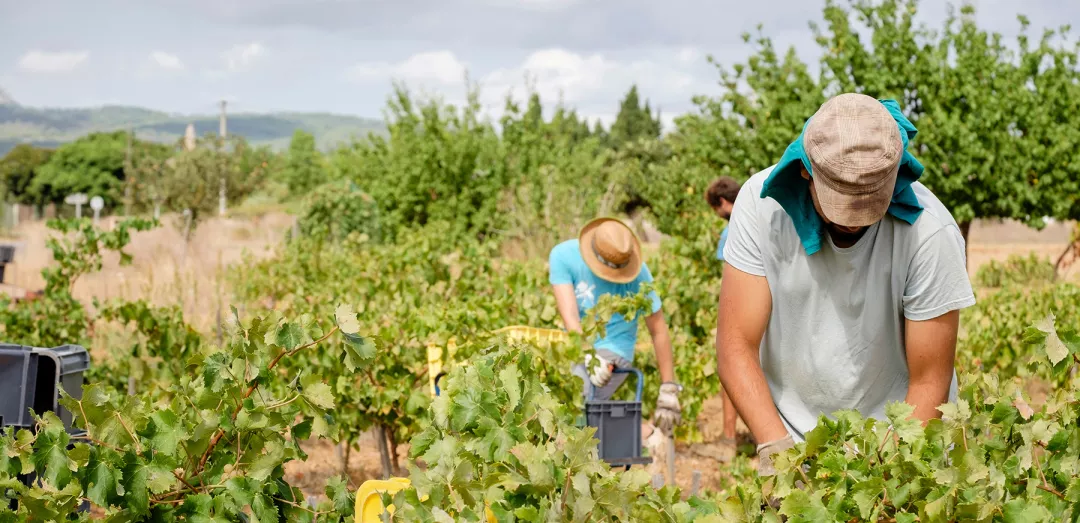Retaining young farmers in the agricultural sector through installation support
- Evaluation
- Long-term Vision for Rural Areas
- Jobs, Growth and Equality in Rural Areas
- Generational Renewal
- Evaluation
- Socio-economic Impacts
The evaluation is addressed to young farmers in rural areas of the Balearic Islands who benefited from installation support. It addresses the reasons that led them to get involved in the agriculture sector, the reasons for abandonment and how to address these challenges.
- Spain
- 2014-2022
- Socio-economic impacts


This evaluation refers to the 2007-2013 and 2014-2020 Rural Development Programme (RDP) of the Balearic Islands, with an evaluation period covering the years between 2013 and 2022. It was commissioned by the Managing Authority of the RDP and the Agricultural and Fisheries Guarantee Fund of the Balearic Islands (FOGAIBA), and published in 2022. This evaluation focuses on the beneficiaries of the 2007-2013 RDP Measure 112 for the installation of young farmers in the rural areas of the Balearic Islands. It aims to:
- illustrate the reasons why young people decided to be involved in the agriculture sector;
- illustrate the reasons for abandonment with specific cases of young people;
- identify potential patterns/characteristics common in young people who have left farming; and
- understand the activities in which young people are involved after abandoning the agricultural sector.
The main methodology used in this report is a survey of Measure 112 beneficiaries from 2007 to 2013. The implementation data collected during the 2007-2013 programming period show that 297 young people joined the agricultural activity through Measure 112 of the Balearic Islands RDP.
In 2021, interviews with six beneficiaries of Measure 6.1 of the 2014-2020 RDP showed that they had received the final payment of the aid. The results of these interviews were presented in the continuous evaluation report covering the period 30 September 2020 to 30 June 2021. Later, in 2022, a survey of the 2007-2013 beneficiaries of Measure 112 was carried out through the contacts available in the database. 43 surveys were completed, representing approximately 20% of the beneficiaries of youth integration assistance in the period 2007-2013 and who were not listed in the 'Agrarian Island Register'. This survey shows the characteristics of the farms abandoned by young people incorporated in the period 2007-2013, as well as the main reasons for the abandonment of agricultural activity. This survey has also collected qualitative information, such as advice and elements to be considered in the next programming period.
As regards limitations, it was difficult to contact all the beneficiaries of Measure 112 in the period 2007-2013, therefore results should be taken with caution.
Data cross-checking identifies that at least 38% of the persons supported in the 2007-2013 period remain in the sector. It could not be established whether the other 62% had definitively abandoned the activity.
According to the survey, it is possible to observe clear differences between the beneficiaries who remain in the agricultural sector and those who left in the link: with the agricultural sector (those who remain have a greater family link with the sector); in the type of production (those that remain more oriented to cereal cultivation while the orientation towards horticulture was much greater in those who left); in the useful agricultural area (the holdings of which remain are much larger than those of the people who left); in the level of help (it is higher for those who remain) and; in the counselling received.
Almost 25% of the beneficiaries who no longer have holdings continue to work in the agricultural sector, but as employees. In addition, an important share is occupied by the tourism sector and, in a lesser share, the mechanics, construction, transport and agri-food industries.
The main reason that drives the abandonment of agricultural activity is the lack of profitability of the farms. Other issues identified hindering the permanence in the sector are the complexity of administrative formalities, ignorance of the process mechanisms or the length of time between the concession and the payment of the aid.
The results highlight the need for good initial training, both at the farm management level and in know-how, as well as continuous advice throughout the process, to ensure successful entry into the agricultural sector and reduce the rate of abandonment.
Author(s)
Red2Red